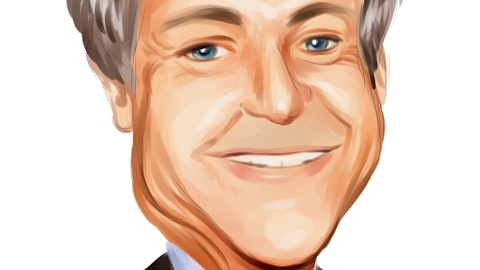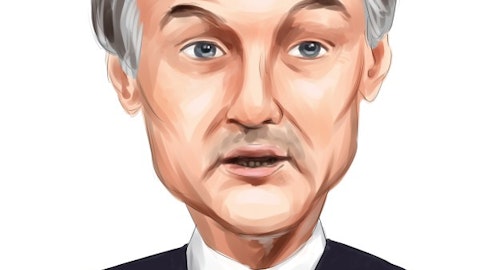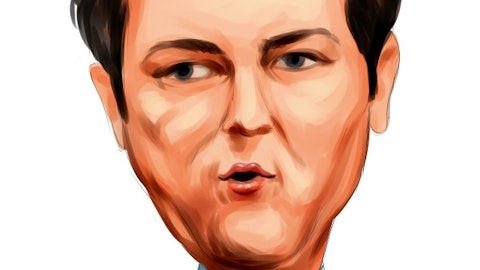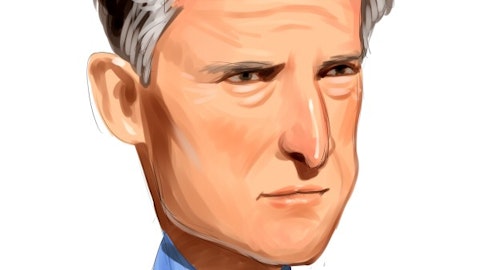As the global hedge fund industry has swelled to almost $3.0 trillion in assets under management, it has become harder for fund managers to generate alpha in order to justify their high fees. Due to high demand, which gives these money managers large amounts of capital to invest, many have to diversify their portfolios significantly, which often makes hedge funds similar to mutual funds. However, Nehal Chopra outshines most of her peers from the hedge fund industry by generating exceptional returns. As a report from CNBC stated, since the beginning of 2015, the net returns of the Chopra’s Ratan Capital Management hedge fund, Tiger Ratan, amounted to an impressive 22.50%, outperforming not only the market but most other hedge funds.
One of the main reasons for Chopra’s great performance is the focus on a small batch of companies which are going through notable events, such as acquisitions of other firms that could boost the revenues and earnings and create cost synergies. Moreover, some previous reports suggested that Chopra also shifted to Europe, together with some other great managers, such as George Soros, who expected the European Central Bank to launch a QE program and weaken the Euro in order to attract investors, primarily from the US. Overall, Chopra has managed to beat the average fund manager by a huge margin as Ratan (seeded by Julian Robertson) has generated annualized returns north of 21% since its inception in 2009.

Nevertheless, Ratan faces some internal problems, despite its outstanding performance. The fund has around $1.0 billion in assets, which could raise the question regarding the investors’ interest in the fund. According to some earlier articles, one of the reasons for that is the high liquidity of employees at the firm, which had several CFOs since inception and has lost a number of analysts. Nevertheless, the hedge fund industry is built around great personalities such as Carl Icahn and Bill Ackman, who can also have a slightly rough approach towards managing their investments at times.
Ratan’s performance emphasizes the fact that a smaller investor can also obtain high returns by imitating the stock picks of hedge fund managers. However, there are some risks associated with following the portfolio of one or two managers, while trying to combine the investment acumen of several fund managers can create a huge pool of data in which most investors will simply get confused. A simple way around this is to follow a strategy that has been tested and has a solid track record of beating the market, such as the small-cap strategy that we have developed at Insider Monkey. The system involves mimicking the 15 most popular small-cap picks among over 700 hedge funds, and has posted returns of 53.2% in 2013 and 28.2% last year, beating the S&P 500 ETF (SPY)’s gains of 32.3% and 13.5% respectively (read more details about why it is important to follow hedge funds).
Let’s take a closer look at Chopra’s stock picks that have been included in Ratan’s 13F filing for the fourth quarter of 2014. The fund had an equity portfolio of only $348.83 million at the end of 2014, which is probably in line with Chopra’s plans to shift towards Europe, and contained only five positions, all of which were long. The stocks of these five companies generated an average return of 18.4% and most of them had double-digit growth during the first three months of 2014.
Another important aspect is that three of these five companies are from the healthcare sector, all of which participated in the consolidation process of the sector in the last several months in one way or another. Ratan’s highest position at the end of 2014 was represented by Actavis plc (NYSE:ACT), in which the investor held 393,800 shares, valued at $101.36 million. The fund initiated a stake in the pharmaceutical company during the first quarter of 2014 and has enjoyed the strong returns of over 40% that the stock posted over the last year. In the first three months of 2015, Actavis’ stock gained another 15.6% as the company completed its $66 billion acquisition of Allergan. Actavis plc (NYSE:ACT) is the most popular healthcare stock among the funds that we track, the bullish sentiment being explained by the strong growth prospects of the company, which has been building its portfolio of products through several acquisitions made in the last couple of years. Andreas Halvorsen, Dan Loeb, Larry Robbins, and Barry Rosenstein are only a few of the 131 investors from our database that disclosed long positions in Actavis plc (NYSE:ACT) as of the end of last year.
The stock of Valeant Pharmaceuticals Intl Inc (NYSE:VRX) also enjoyed a strong first quarter as it surged by almost 39% in the first three months of 2015 as the company purchased Salix Pharmaceuticals. Valeant Pharmaceuticals Intl Inc (NYSE:VRX) represents a long-term position in Ratan’s equity portfolio, containing 688,400 shares at the end of 2014 (up by 40% on the quarter), valued at $98.51 million. Valeant also has a strong outlook from analysts with a consensus ‘Buy’ rating. Recently, Deutsche Bank increased its price target on the stock to $200 with a ‘Hold’ rating, while JP Morgan reiterated an ‘Overweight’ rating with a price target of $240. Moreover, Valeant Pharmaceuticals Intl Inc (NYSE:VRX) also has a number of major investors among its shareholders, such as Bill Ackman’s Pershing Square, which recently disclosed a 5.7% stake, and Jeff Ubben’s ValueAct Capital, which held 19.38 million shares as of the end of last year (Mr. Ubben was appointed to Valeant’s board in 2015).





